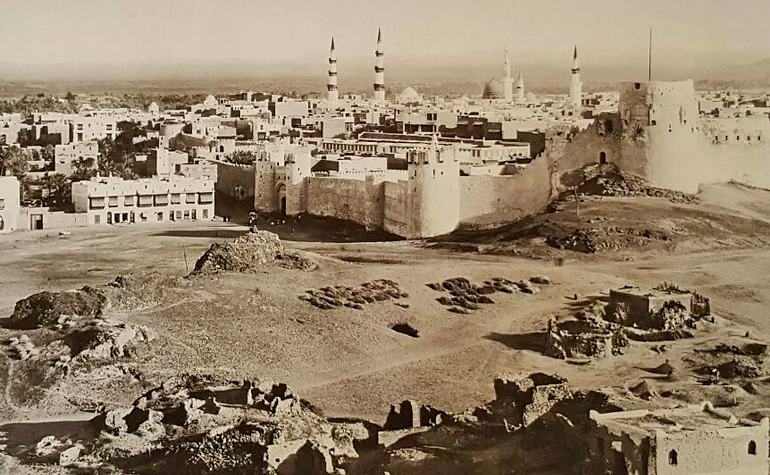The Jews of Old-Time Medina aka Yathrib

- The city of Madinah was originally known as Yathrib, an oasis city dating as far back as the 6th century BCE. During the war between Jews and Romans in the third century CE, many Jews fled Jerusalem and migrated to their ancestral place of Yathrib (present Madinah). Nero sent a massive Roman force under Petra Lenidas to Madinah to massacre the Jews in 213 CE. A community survived and by the time the Prophet (peace and blessings of Allah be on him) had migrated there was a large majority of Jewish presence in and around the city.
Nathan P. Baker of
The reason for this certainty is simple. The root of
Aramaic-Hebrew medina is din, “law,”
and medina in
both languages denotes a place in which a given body of law or legal system is
applied, i.e., an area of political jurisdiction. The difference is, however,
that in Hebrew this area is a large one, while in Aramaic it is limited to a
city. Thus, for example, in the book of Esther, which we read this week in
synagogue in honor of Purim, the opening verse of the Hebrew text tells us that
King Ahasuerus ruled over 127 medinas from India Ethiopia
We thus know that whoever settled in Yathrib and gave it
its non-Arabic name of “the Medina New York Philadelphia New York New York Palestine Babylonia , both
Aramaic-speaking areas in the early centuries C.E., because we also know from
Arab historians that, in Muhammad’s time, three large Jewish clans — the
Banu-Nadir or “Sons of Nadir,” the Banu-Korayzeh and the Banu-Kainuka —
dominated the city. In addition, there were in Medina Yemen
These same Arab historians, with an assist from the Koran,
tell us the rest of the story. In the year 622, in his famous hijrah or
migration, Muhammad left his home town of Mecca Medina
After Muhammad’s move to Medina Medina
Muhammad and his followers also inherited the local name
for Yathrib, “Al-Medina.” And in 629 they moved against another Jewish
population, that of the oasis of Khaybar north of Medina Arabian peninsula for a long time. The 12th-century
Jewish traveler Benjamin of Tudela reported large numbers of them still living
in the Khaybar region, and it was apparently only in the 15th or 16th centuries
that the last remnants of them disappeared completely.

View of the City of Medina at night
BEN-GURION’S DECLARATION ON THE EXCLUSIVE AND INALIENABLE JEWISH RIGHT TO THE WHOLE OF
ReplyDeleteTHE LAND OF ISRAEL:
at the Basle Session of the 20th Zionist Congress at Zurich(1937)
(David Ben-Gurion was the first Prime Minister of Israel and widely hailed as the State's main founder).
No Jew has the right to yield the rights of the Jewish People in Israel -
David Ben Gurion
(David Ben-Gurion was the first Prime Minister of Israel and widely hailed as the State's main founder).
"No Jew has the right to yield the rights of the Jewish People in Israel.
No Jew has the authority to do so.
No Jewish body has the authority to do so.
Not even the entire Jewish People alive today has the right to yield any part of Israel.
It is the right of the Jewish People over the generations, a right that under no conditions can be cancelled.
Even if Jews during a specific period proclaim they are relinquishing this right, they have neither the power nor the authority to deny it to future generations.
No concession of this type is binding or obligates the Jewish People. Our right to the country - the entire country - exists as an eternal right, and we shall not yield this historic right until its full and complete redemption is realized."
(David Ben Gurion, Zionist Congress, Basel, Switzerland, 1937).
"No country in the world exists today by virtue of its 'right'.
All countries exist today by virtue of their ability to defend themselves against those who seek their destruction